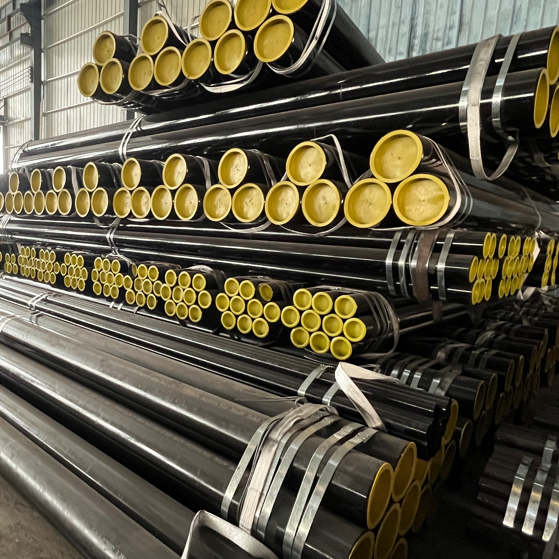Annealing of ASTM A53 ERW steel pipes(Electric Resistance Welding steel pipes) is to heat the steel pipe to a certain temperature and maintain it at that temperature, and then slowly cool it to room temperature. Annealing includes annealing, spheroidizing annealing, and stress relief annealing.
1.Heating ASTM A53 ERW steel pipes to a predetermined temperature, keeping it warm for a period of time, and then slowly cooling it in the furnace is called annealing. The purpose is to reduce the hardness of the steel and eliminate the uneven structure and internal stress in the steel.
2. Heating ERW steel pipes to 750°C, keeping warm for a period of time, slowly cooling to 500°C, and then cooling in air is called spheroidizing annealing. The purpose is to reduce the hardness and cutting performance of the steel. Mainly used for high carbon steel.
3. Stress relief ASTM A53 ERW steel pipes annealing is also called low temperature annealing. The steel is heated to 500-600 degrees, kept warm for a period of time, slowly cooled in the furnace to below 300 degrees, and then cooled at room temperature. The structure does not change during the annealing process, and the internal stress of the metal is mainly eliminated.
4. Normalizing: The heat treatment process of heating the ERW steel pipe to 30-50°C above the critical temperature and maintaining it for an appropriate time, and then cooling it in still air is called normalizing. The main purpose of normalizing is to refine the structure and properties of steel and obtain a structure close to equilibrium. The main difference between normalizing and annealing processes is that the cooling rate of normalizing is slightly faster, so the production cycle of normalizing heat treatment is short.
5. During quenching, heat the ERW steel pipe to a certain temperature above the critical point (the quenching temperature of No. 45 steel is 840~860℃, the quenching temperature of carbon tool steel is 760~780℃), and then keep it warm in the water at an appropriate speed. (Cooling in oil) The heat treatment process to obtain a martensite or bainite structure is called quenching. The purpose of quenching and cooling is to obtain a martensite structure with high hardness, but poor plasticity and toughness. The hardness of martensite increases as the carbon content of the steel increases.
6. ASTM A53 ERW steel pipes are heated to a certain temperature below the critical temperature, kept warm for a period of time, and then cooled to room temperature. This heat treatment process is called tempering. Due to the high hardness and brittleness of quenched steel, brittle fracture often occurs when used directly. Tempering can eliminate or reduce internal stress, reduce brittleness, and improve toughness; on the other hand, the mechanical properties of quenched steel can be adjusted to achieve the performance of steel. Depending on the tempering temperature, tempering can be divided into low temperature tempering. Medium temperature tempering, high temperature tempering.
 Why should Seamless steel pipes be epoxy powder coated?
Why should Seamless steel pipes be epoxy powder coated?
 ASTM A106 Thick-walled steel pipe production steps
ASTM A106 Thick-walled steel pipe production steps
 Shengtian Group successfully participated in the Russian Oil and Gas Exhibition
Shengtian Group successfully participated in the Russian Oil and Gas Exhibition
 Is API 5L Black Steel Pipe Good For Air Lines?
Is API 5L Black Steel Pipe Good For Air Lines?